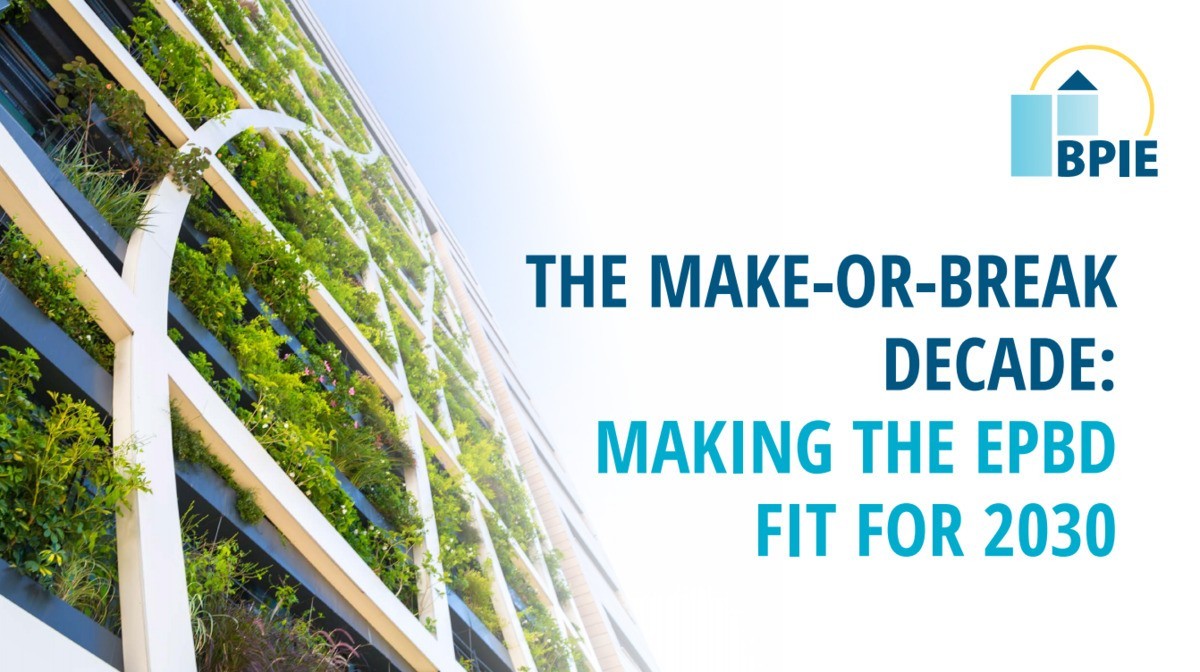The make-or-break decade: Making the EPBD fit for 2030

The make-or-break decade: Making the EPBD fit for 2030
This new policy briefing by the Buildings Performance Institute Europe (BPIE) highlights a make-or-break opportunity to make the EPBD ‘fit for 2030’, ensuring that the buildings sector contributes significantly to the overall EU-wide target of more than halving emissions by 2030, and crucially, that it is fit to respond to the climate emergency.
The keystone of European buildings legislation, the Energy Performance of Buildings Directive (EPBD), will be opened for revision by the end of 2021. The EU must now deliver on announced targets by taking bold actions and showing results. The ambition of the EPBD revision should go beyond simply ‘aligning’ with the Renovation Wave, since the latter was published before the new 2030 climate target of reducing greenhouse gas (GHG) emissions by at least 55%, was agreed. The revision should be comprehensive and not take a ‘cherry-picking’ approach to legislative revision.
Crucially, it must ensure the buildings sector will contribute to the achievement of the updated 2030 climate target; and second, to make the EPBD a milestone towards reaching climate-neutrality by 2050. This means reaching an annual 3% deep renovation rate and a 60% reduction in GHG emissions by 2030. It should do this while taking a people-centred approach that supports energy-poor, low- and middle-income households; the integration of whole-life carbon considerations next to the Energy Efficiency First principle; and building performance requirements guided by climate-neutrality rather than cost optimality.



